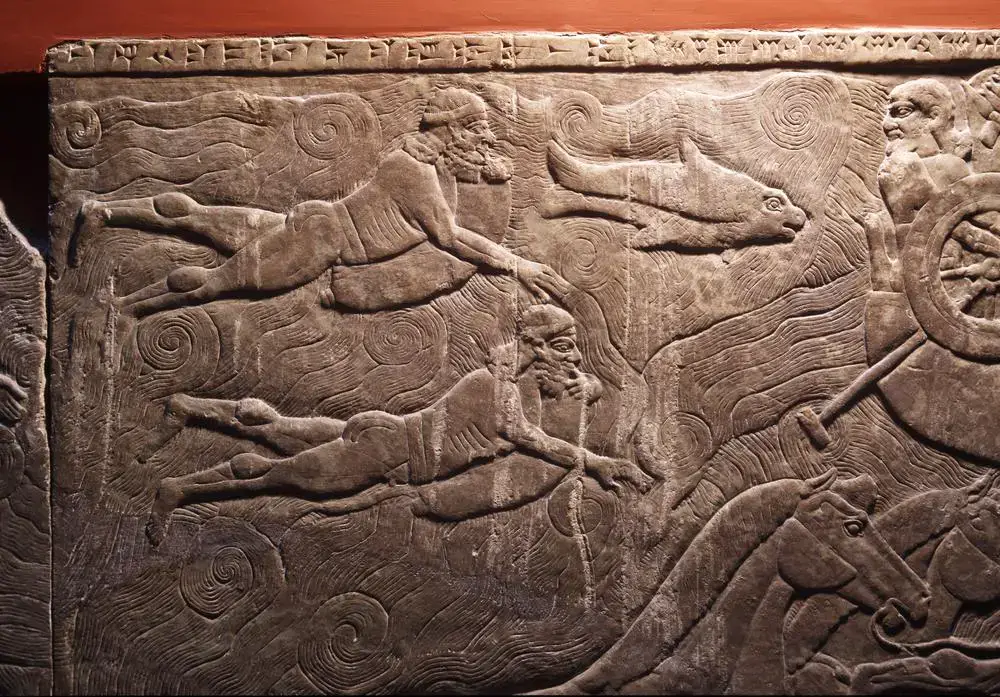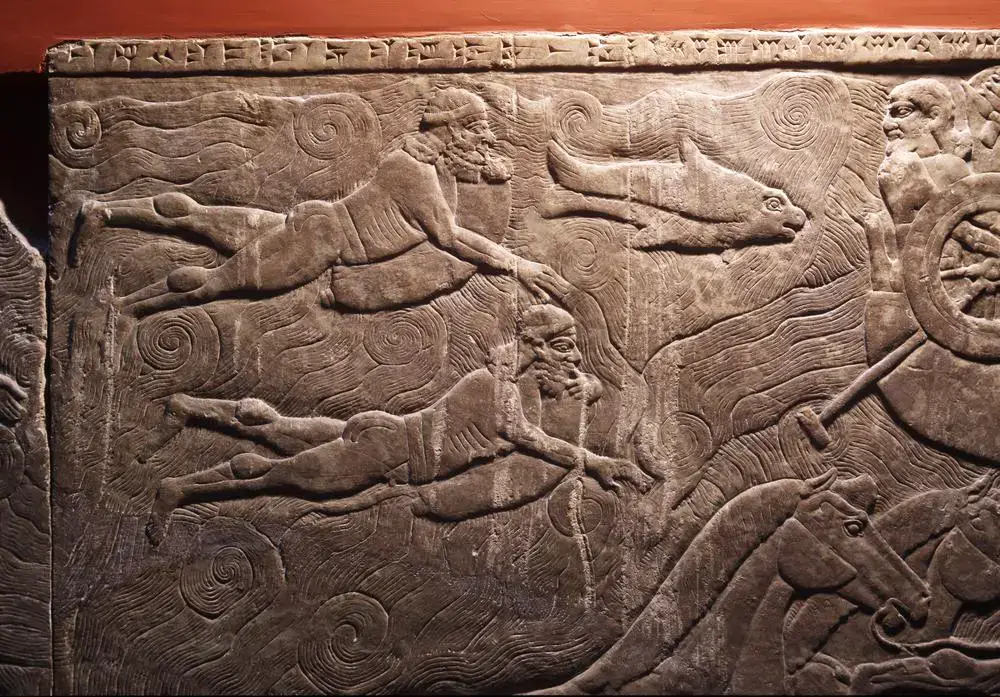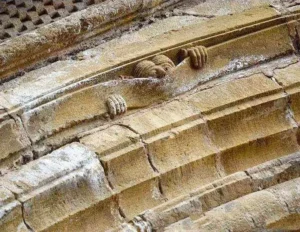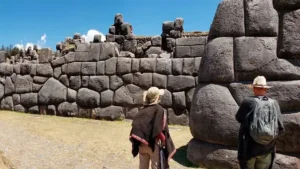Introduction: An astonishing relic of the ancient world, an Assyrian wall relief panel, reveals a fascinating aspect of ancient technology. Dating back roughly 3,000 years, this panel depicts a soldier employing a goat skin inflatable bag to dive underwater, making it the oldest recorded instance of a diver in history.

Historical Context: The Assyrian Empire, known for its powerful armies and monumental architecture, also left behind detailed artistic records of their daily life and military expeditions. This particular relief panel is a rare visual testimony to the innovative methods used in warfare and everyday activities, like diving.
The Wall Relief Panel: Found in one of the many palaces of the Assyrian kings, this relief showcases a soldier equipped with an inflatable bag, likely made from goat skin. The depiction indicates a rudimentary but effective method of underwater exploration or perhaps even combat.

Significance in Underwater Archaeology: The relief is significant for underwater archaeologists and historians as it provides the earliest evidence of diving. It pushes back the timeline of human underwater exploration and suggests the Assyrians’ adeptness in using available materials for complex tasks.
Conservation and Display: This ancient panel is preserved and displayed in a museum (specific museum name and location if available), allowing visitors and scholars to appreciate this unique piece of Assyrian art and technology.
Technological Insights: The depiction of the goat skin bag as a flotation device provides insight into the Assyrians’ understanding of air’s buoyancy and its practical applications. This ancient innovation is a precursor to modern diving technology.
Conclusion: The Assyrian wall relief panel is more than an artistic artifact; it is a testament to human ingenuity and adaptability. It underscores the innovative spirit of the ancient Assyrians, who utilized their understanding of the natural world to extend their capabilities, even under water.


